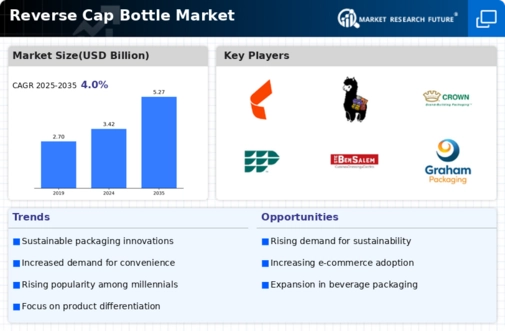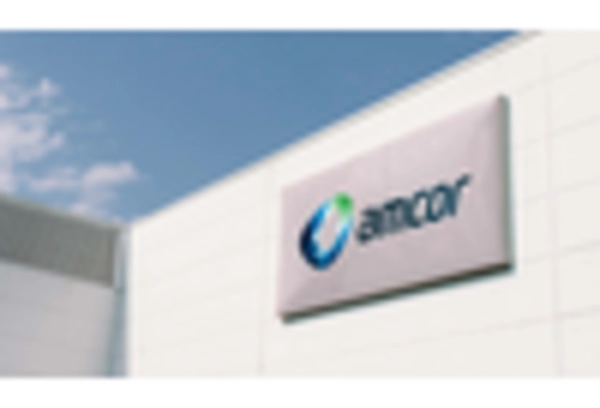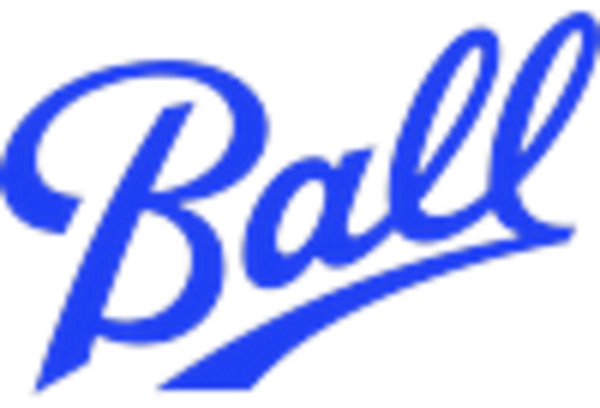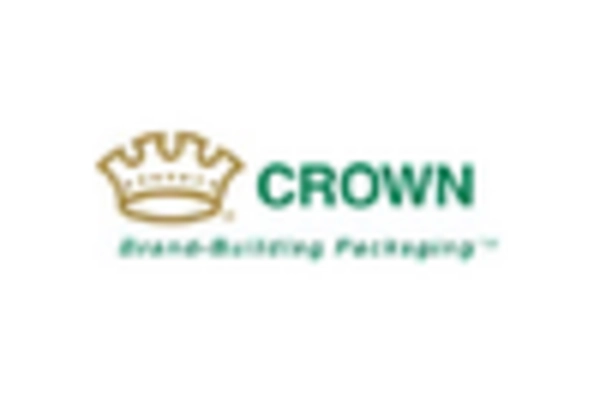Consumer Convenience
The demand for convenience in packaging is a notable driver in the Reverse Cap Bottle Market. As lifestyles become busier, consumers are seeking packaging solutions that offer ease of use and portability. Reverse cap bottles, designed for quick and efficient dispensing, cater to this need, making them popular among on-the-go consumers. Market analysis indicates that products with user-friendly packaging are likely to see higher sales, with a potential increase of 6% in the beverage sector alone. This trend suggests that manufacturers focusing on convenience-oriented designs, such as reverse cap bottles, may enhance their appeal and capture a larger share of the market.
Sustainability Initiatives
The increasing emphasis on sustainability appears to be a driving force in the Reverse Cap Bottle Market. Consumers are becoming more environmentally conscious, leading to a demand for packaging solutions that minimize waste and promote recyclability. Reverse cap bottles, often made from recyclable materials, align with these consumer preferences. According to recent data, the sustainable packaging market is projected to grow at a compound annual growth rate of 7.7% through 2027. This trend suggests that companies adopting eco-friendly practices, including the use of reverse cap bottles, may gain a competitive edge in the market. As businesses strive to meet regulatory requirements and consumer expectations, the integration of sustainable packaging solutions is likely to become a standard practice in the Reverse Cap Bottle Market.
Technological Advancements
Technological innovations are reshaping the Reverse Cap Bottle Market, enhancing production efficiency and product functionality. Advances in manufacturing processes, such as injection molding and blow molding, have enabled the creation of more complex bottle designs that cater to diverse consumer needs. Furthermore, the integration of smart technology into packaging, such as QR codes and NFC tags, allows brands to engage consumers directly. This technological evolution not only improves user experience but also provides valuable data for companies to refine their marketing strategies. As the industry continues to evolve, the adoption of these technologies is likely to drive growth and innovation within the Reverse Cap Bottle Market.
Health and Safety Regulations
The growing awareness of health and safety standards is influencing the Reverse Cap Bottle Market. Stringent regulations regarding food and beverage packaging are prompting manufacturers to adopt safer materials and designs. Reverse cap bottles, which often feature tamper-evident seals and child-resistant designs, are increasingly favored for their ability to enhance product safety. According to industry reports, the food and beverage sector is expected to witness a rise in demand for safer packaging solutions, with a projected market growth of 5.5% annually. This regulatory landscape suggests that companies prioritizing compliance and safety in their packaging solutions, including reverse cap bottles, may experience increased market share and consumer trust.
Brand Differentiation Strategies
In a competitive marketplace, brand differentiation is crucial for success in the Reverse Cap Bottle Market. Companies are increasingly leveraging unique packaging designs to stand out and attract consumers. Reverse cap bottles, with their distinctive appearance and functionality, provide an opportunity for brands to create a memorable identity. Research indicates that brands utilizing innovative packaging solutions can achieve up to 20% higher consumer recall rates. This suggests that businesses investing in reverse cap bottle designs may not only enhance their brand visibility but also foster customer loyalty. As the market evolves, the emphasis on distinctive packaging strategies is likely to intensify, further driving growth in the Reverse Cap Bottle Market.

















Leave a Comment